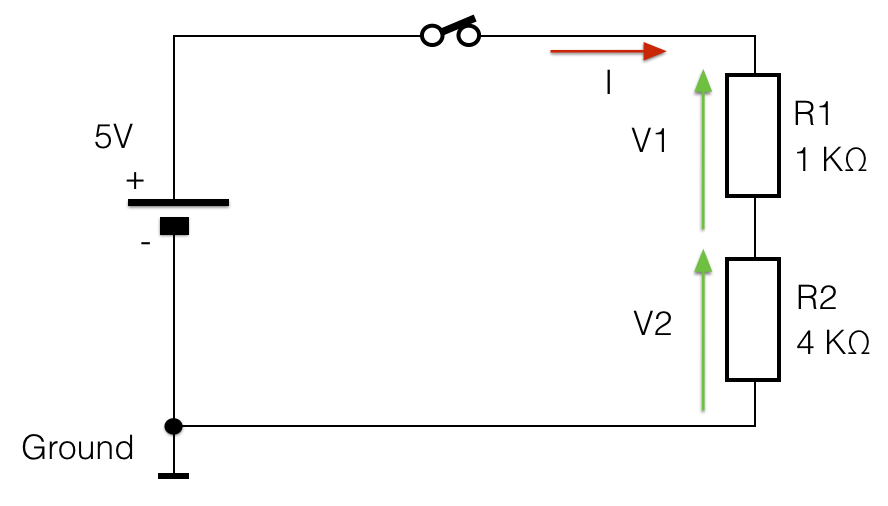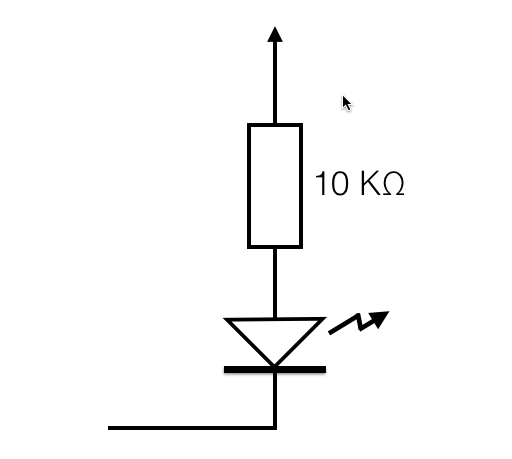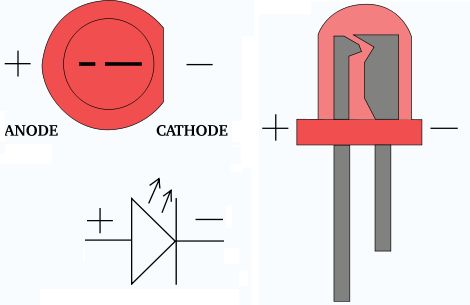Difference between revisions of "CSC270 Lab 3 2016"
(→Light-Emitting Diodes (LED)) |
(→Light-Emitting Diodes (LED)) |
||
| Line 27: | Line 27: | ||
<br /> | <br /> | ||
* Implement the circuit below, which uses an LED. The diagram on the right indicates how to find the polarity of the LED. | * Implement the circuit below, which uses an LED. The diagram on the right indicates how to find the polarity of the LED. | ||
| + | * Connect the input of the circuit (left line) to a Logic Switch. Connect one of the Logic Indicators on the Kit to the same Logic Switch. | ||
| + | * Comment on your circuit. Is it working the way you want? Why or why not? | ||
<br /> | <br /> | ||
{| | {| | ||
Revision as of 15:24, 9 February 2016
--D. Thiebaut (talk) 14:43, 9 February 2016 (EST)
Contents
Electronics, Diodes, and Transistors
Part 1: Ohm's Law
- For this part, you will implement the circuit below on the breadboard and you will measure V1 and V2 (see more information about the voltmeter below). Verify that V1 + V2 = 5 V and that V1/R1 = V2/R2.
- You may not be able to find a 4 KOhm resistor, but most likely a 3.9 KOhm one. (See chart below, taken from ecee.colorado.edu/~mcclurel.
Measuring Voltages with the Agilent 34401A Voltmeter
- Press the DC V button, and plug a black probe (rubber banana plug) into the LO connector (refer to diagram above), and a red probe (rubber banana plug) into the HI connector.
- Press the Auto/Man button to put the meter into Automatic range measurements.
- In your lab report, indicate the 3 voltages measured: V, V1, and V2.
Light-Emitting Diodes (LED)
- Implement the circuit below, which uses an LED. The diagram on the right indicates how to find the polarity of the LED.
- Connect the input of the circuit (left line) to a Logic Switch. Connect one of the Logic Indicators on the Kit to the same Logic Switch.
- Comment on your circuit. Is it working the way you want? Why or why not?
|
|




